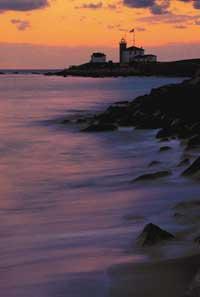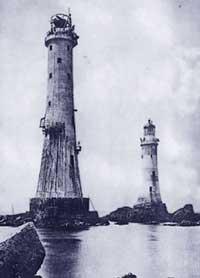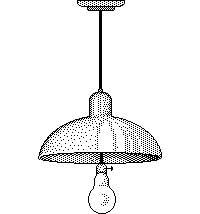History of the Lighthouses
2001/07/01 Roa Zubia, Guillermo - Elhuyar Zientzia Iturria: Elhuyar aldizkaria
History of the Lighthouses
Wood and fire
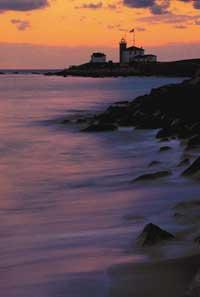
The book Odyssey de Homero mentions the use of fire to highlight the coasts. But the first well-documented lighthouse is that of the island of Faros, a tower of 130 meters built by the Egyptians at the entrance of the port of Alexandria. a.C. III. It is a construction of the sixteenth century. The lighthouse, for its large size and beauty, was included in the list of seven wonders of the world.
Egyptians, Phoenicians and Romans built numerous lighthouses on the shores of the Mediterranean, Aegean and the Black Sea. But Roman influence also spread to the north. At the time of command of Emperor Claudius, in Galicia were built the Tower of Hercules and the Tower of Command and other few lighthouses in the Channel of La Mancha. In this way, in addition to protecting the commercial routes, they contributed to guarantee the stability of the empire. In general, the lighthouses of that time were simple wooden burning towers. The fact of being on all night was a laborious job, so they experienced other lighting systems. Gradually, large candles or oil lamps were installed in the headlights.
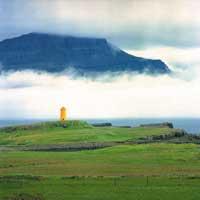
The presence of some reference light on the coast was very useful, especially in days of storm, but then it was the most difficult time to have on fire. The simple placement of the roof helped a lot to cope with bad weather, but this invention exacerbated another of the problems of fire. Despite being wood, coal or lamps, it accumulated smoke around the flame and made light difficult. The smoke forced to adapt the architecture of the towers.
The assistance provided by the aforementioned lighthouses was very limited. Oil lamps and waxes were only effective through their inclusion in containers and lamps, for which glass placement was essential. That of that time, however, was of very poor quality.

However, lighting those fires was better than having nothing. When the Empire decayed, navigation went off and plunged into the dark Middle Ages. In this case the metaphor is perfect. The people of that time preferred not to light any kind of light on the coast. It is no wonder. Wars and invasions were produced from the sea. The Vikings, for example, dispersed in known and unknown seas.
Reference is made to piraterías and robberies made by means of fake headlights. Documents after the twentieth century. The thieves lit spectacular fires next to the dangerous cliffs and when the ships were considered entrances to the ports they suffered an accident. The thieves, then, looted the ship.
Period of resurrection

With the aim of protecting the marine and land market against thieves, a group of cities in northern Germany met to radically change the situation. The association was called Hansa Teutónica, German word of the Middle Ages to express the association Hanse and the guild. To protect them, among others, XIII, XIV and XV. For centuries they formed a network of lighthouses on the German and Scandinavian coast.
On the other hand, the first lighthouse of Cordouán, at the mouth of the Garonne, was the XIII. It was built in the twentieth century, as support to the market through the wine ships of Bordeaux, at the present time with Spain. The history of the lighthouse of Cordouán is related to the wine market. Therefore, since this market is so prosperous, it is not surprising that today this great and elegant lighthouse is present.
Floating lighthouses

In the Netherlands, the construction of lighthouses was difficult due to the variability of the coast as sand. Changes in season, water currents, wind, storms, etc., could move, increase or decrease the dunes. In this way, navigation was dangerous and it was not possible to use land lighthouses. However, lighthouse boats, at least XV, have been used. From the twentieth century. Later they became habitual in other countries. For example, in 1732 he worked in the estuary of the Thames the first ship of lighthouses documented.
XV and XVI. The centuries are the time of the first important technological advances in the improvement of lighthouses. The fire of candles or oil lamps did not give much light intensity. The solution was to somehow increase the light intensity, in this way the XVI. In the mid-twentieth century simple metal reflectors began to be incorporated. XVII. In the eighteenth century the hegemony of sailing ships was evident in navigation and, being so comfortable, increased maritime traffic. The importance that the navigation acquired needed a profound change.
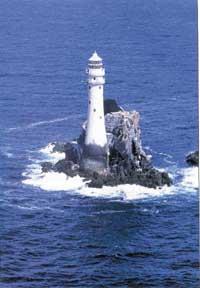
Sebo and coal began to burn in the lighthouses and gradually began to seek technological solutions for their problems and shortages. The importance was mainly focused on coal, since at that time the mines were heavily exploited, and in addition, the strong light obtained by burning coal was highly appreciated by the men of the sea.
XVIII. Two advances of the twentieth century had their application in the field of lighthouses. In 1765 the first came from the hands of the prestigious scientist Antoine-Laurent Lavoisier. Lavoisier developed the proper use of parabolic reflector, explaining that the luminous source should be placed in the focus of the parable. This discovery coincides with the desire to investigate the Enlightenment, which allowed to make more of the traditional light source.
On the other hand, until that century, much progress had been made in the improvement of oil lamps. But in those years the lamps were introduced into the glass tubes and tricks were developed to improve combustion. Thus, the Frenchman Aimé Argand invented an oil lamp ten times brighter than the previous one. For this purpose, he used the appropriate support so that the wick in the form of a ring reaches a lot of wind until the flame. Design of new versions of this type of lamps. These novelties are the XIX. At the beginning of the twentieth century it was opened step to a basic lamp that in modern lighthouses would not change for long.
Modern look Modern look
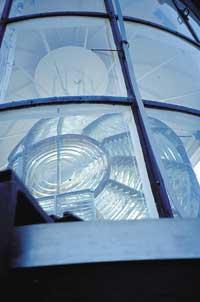
However, the XVIII. Already in the twentieth century the need to identify faros at a distance was resolved. The Swede Jonas Norberg, through a watchmaking mechanism, launched the first lighthouse with rotating mirrors. With this invention was achieved the effect that the rays of light will rotate. Therefore, the lighthouse that remotely emits all the brightness and desired speed was invented in 1781.
XIX. At the beginning of the twentieth century, Frenchman Augustine Jean Fresnel invented a good lens as a complement to the lamps. The success was total. And it is that all the lighthouses of today work with a kind of lighthouse. The objective of the Fresnel lens is to capture and concentrate the light that is dispersed. For this purpose, some prisms that give a special aspect to the lens capture the light and direct it towards the horizon. Fresnel's invention was first added to Cordouán's lighthouse in 1823. Fresnel himself joined lenses and reflectors and invented catalytic systems.

The English Arthur Kitson invented a system that evaporated before burning oil. The oil was extracted from both plants and whales. It was an expensive fuel that demanded easily damaging mechanisms, so its maintenance was not easy.
In some lighthouses, oil or, when it was covered, olive oil became common. However, tests were started to find a gas suitable for urban lighting and lighthouses. XIX. At the beginning of the twentieth century several attempts were made with coal gas. Some Finnish and Italian lighthouses used gas produced in adjacent factories. This system was successful as it was possible to avoid continuous care.

In some luminous buoys a compressed gas developed in technological research in the railway field was applied to keep on fire. This gave the buoys an autonomy of months. Subsequently, within this line of research, the best substance was found in 1895: acetylene. Acetylene has very suitable properties for both use and storage. When burned, it provides a luminous intensity 20 times higher than any other gas, and in addition, adding water to a kilo of calcium carbide is generated 340 liters of acetylene.
XIX. In the eighteenth century, as a result of the industrial revolution, the number of ships increased considerably. This had a great influence on the lighthouses. The need arises to mark rocks, dunes and other obstacles to navigation that were not seen. For this reason, numerous beacons were installed. In addition, to identify the source of light, a code based on the frequency of flashes was launched.
XX. In the eighteenth century came electricity to the lighthouses. As the electrical systems were developed, they multiplied. However, due to the many failures that occurred, it was customary to have emergency acetylene systems prepared.
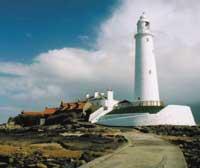
In general, the use of electricity was extended along with adequate electrical networks. Many times the war has had a lot to do with it, for example in Europe. In Euskal Herria during the first thirty years of this century many lighthouses were electrified.
Currently, automated systems predominate, which are switched on and off by photoelectric cells and illuminated by modern lamps. The operation has been centralized and the lighthouses only require maintenance.

Gai honi buruzko eduki gehiago
Elhuyarrek garatutako teknologia



